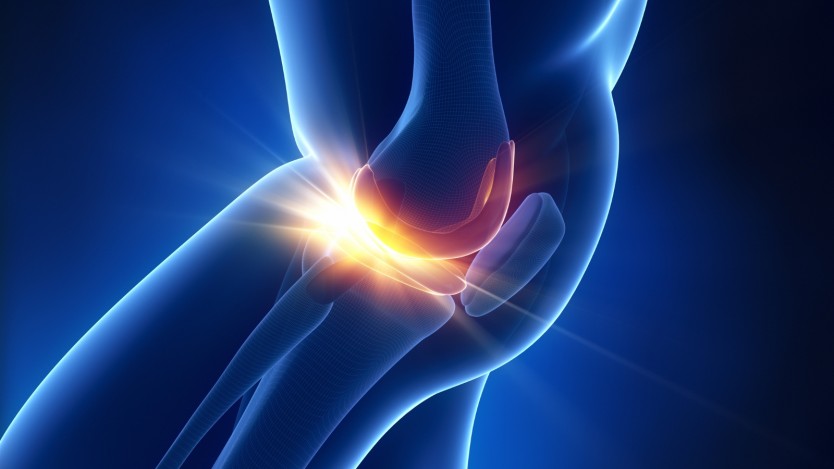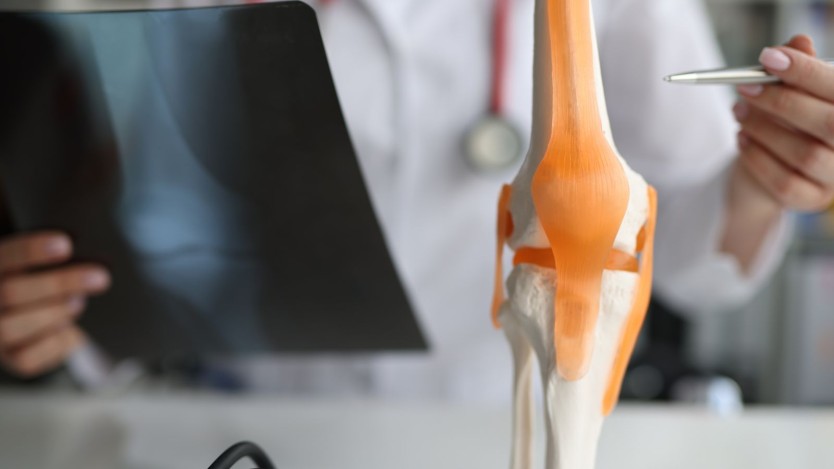Types of meniscal injuries: Medial meniscus injury

In each of our knees there are two different menisci, each of which can become injured at some point in our lives. These menisci are the medial meniscus, which will be discussed in this article, and the lateral meniscus.
This text will show the characteristics of the medial meniscus, its location in the knee and the type of injury it can sustain.
The medial meniscus resembles a C and is located in front of the insertion where the anterior cruciate ligament is located at the spinal base of the tibia, and is attached in the central area of the meniscus to the deep portion of the medial collateral ligament, also known as the capsular ligament.

When talking about injuries to the medial meniscus, it is necessary to differentiate between three groups of people affected, differentiated mainly by the health of the meniscus, which is directly related to the age of the individual:
- Meniscus injury in young patients: This is an injury typical of athletes, which means that the meniscus contains young chondrocytes, so it is a trauma to a healthy meniscus.
- Meniscus injuries in older individuals: These are menisci with a previous degenerative process, which means that they only need minimal trauma to rupture, causing permanent discomfort with few symptoms, which is why patients take high doses of anti-inflammatory drugs. In these cases, the meniscus usually tears at the posterior aspect of the underside of the medial meniscus. This is one of the most common causes of knee pain, especially in women.
Despite popular belief, meniscal injuries are more common in degenerative menisci than in young athletes.
- Meniscal lesions in individuals who have microtrauma to the medial meniscus due to their working posture, as they spend much of their time with their knee flexed. Although it is not a healthy meniscus, it could be included as such as it is not considered a meniscus with a degenerative process.
The way in which traumatic medial meniscal tears occur also differs according to the health of the meniscus. In the case of previously healthy menisci, tears tend to occur in football players, miners and upholsterers, for example, as these are individuals who work hard with the knee in maximum flexion, causing microtrauma to the meniscus on a continuous basis.
The injury in these cases is usually caused by an uncoordinated flexion-extension and rotation movement, resulting in a tear of the meniscus on the posterior aspect, or in some cases a disinsertion of the meniscus (also called a parameniscus injury).
In the case of compression, the meniscal tear will be vertical and even slightly oblique. In this case, the so-called "bucket-handle tear" occurs, which is characterised by the detachment of an area of the meniscus and subsequent displacement to the centre of the joint, causing a blockage in the knee and the consequent impossibility of flexing or extending the knee.
In the event that the injury occurs at the level of the parameniscus, the injury will be very painful but with the possibility of healing.
In contrast, in injuries to previously degenerated menisci, the tear occurs horizontally. In these cases, the menisci have less elasticity than healthy menisci, so that a simple movement can cause the anterior cruciate ligament and the quadriceps, which support the knee, to fail to control, resulting in a meniscal tear due to a shearing phenomenon.
It can occur in any situation, even when turning over in bed. It is worth mentioning that the latter injury is more likely to occur in women than in men.

Do you need to consult a trauma surgeon?
Purchase your medical voucher easily under Operarme's guarantees and select your nearest clinic/hospital.
Medical disclaimer: All the published content in Operarme is intended to disseminate reliable medical information to the general public, and is reviewed by healthcare professionals. In any case should this information be used to perform a diagnosis, indicate a treatment, or replace the medical assessment of a professional in a face to face consultation. Find more information in the links below:
